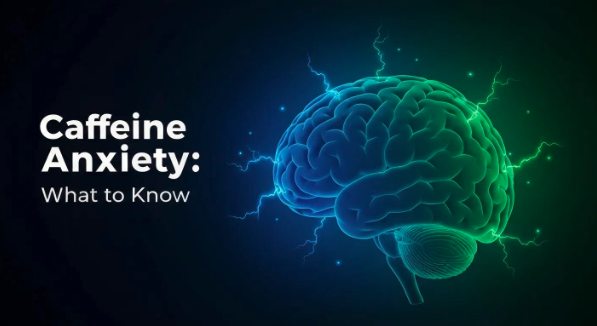Early Recognition of Mood Dysregulation
Learn about recognizing early signs of mood dysregulation to improve understanding and support for affected individuals.

Recognizing Early Signs
Understanding the early signs of mood dysregulation is crucial for timely intervention and support. These signs can manifest in various emotional states and can significantly impact daily functioning.

Intense Emotional States
Individuals experiencing mood dysregulation may exhibit intense emotional states. These can include prolonged feelings of sadness, anxiety, worry, irritability, or sleep disturbances. When these feelings are intense, last for an extended period, and interfere with daily activities such as school, work, and relationships, they can indicate a mental health problem requiring professional support [1].
Emotional StateDescriptionSadnessMay become overwhelming, leading to a lack of interest in previously enjoyed activities.AnxietyPersistent worry that disrupts focus on daily tasks.IrritabilityExtreme mood swings or outbursts, disproportionate to the situation.Sleep ProblemsDifficulty falling or staying asleep, often related to emotional distress.
Impact on Daily Functioning
The effects of mood dysregulation on daily life can be profound. Depressive disorders can lead to low energy, changes in appetite, and difficulties concentrating, which impact performance in educational and occupational settings.
Area of Daily FunctioningPossible EffectsSchoolDecreased performance, missed assignments, and difficulties with peer relationships.WorkReduced productivity, increased absenteeism, and strained interactions with colleagues.RelationshipsWithdrawal from social activities and difficulty maintaining personal connections.
The need to recognize these patterns early is paramount. Individuals showing such signs may benefit from resources on lifestyle changes to manage mood disorders and information about the role of sleep in mood regulation. Increasing awareness of these emotional states and their impacts can help individuals seek timely support and ultimately foster emotional stability.
Understanding DMDD
Definition and Onset
Disruptive Mood Dysregulation Disorder (DMDD) is a mental health condition that primarily affects children. Characterized by chronic, intense irritability and frequent temper outbursts that are disproportionate to the situation, DMDD requires that symptoms develop before the age of 10 to meet diagnostic criteria [2]. This condition was integrated into the Diagnostic and Statistical Manual of Mental Disorders (DSM-5) in 2013, highlighting its significance in the assessment and diagnosis of mental disorders.
Youth typically receive a DMDD diagnosis between the ages of 6 and 10, with symptoms needing to be present consistently for at least 12 months. The symptoms can evolve as children mature; for instance, while tantrums may reduce, signs of depression or anxiety may emerge in adolescence or young adulthood. Early identification and intervention are crucial for managing relationships, academic performance, and social interactions [3].
Diagnostic Criteria Overview
To diagnose DMDD, certain criteria must be fulfilled. These criteria ensure that the diagnosis is precise and reflects the child's symptoms adequately. The essential diagnostic components include:
Diagnostic CriteriaDescriptionChronic IrritabilityPersistent irritability, often described as angry or sad, that occurs most of the day, nearly every day.Severe OutburstsFrequent temper outbursts occurring three or more times per week, typically inappropriate to the situation.DurationSymptoms must be ongoing for at least 12 months and cannot be absent for more than three consecutive months.Age of OnsetSymptoms must have developed before the age of 10.Impact on FunctioningSymptoms must substantially interfere with social, school, or other important areas of functioning.
Early recognition of DMDD is crucial as the symptoms are unlikely to resolve independently. They can worsen over time without appropriate intervention. Seeking professional help is essential for implementing effective strategies, allowing for better management of mood dysregulation.
Prevalence and Diagnosis
Age Range Affected
Disruptive Mood Dysregulation Disorder (DMDD) primarily affects children and adolescents. Early research suggests that DMDD may affect around 2% to 5% of children in the U.S. [2]. Typically, youth are diagnosed between the ages of 6 and 10, and they must exhibit symptoms consistently for 12 or more months for a diagnosis to be made. Symptoms of DMDD often begin before the age of 10, and mental health professionals will not diagnose DMDD in children younger than 6 or adolescents older than 18 [3].
Age GroupDiagnosis ProbabilityUnder 6Not Diagnosed6 to 102% - 5%11 to 18Transitional SymptomsOver 18Not Diagnosed
Diagnostic Assessment Tools
The diagnosis of DMDD is based on specific criteria outlined in the Diagnostic and Statistical Manual of Mental Disorders (DSM-5). Mental health professionals evaluate children through reports from parents, siblings, friends, and teachers to assess behavior and symptom patterns. To qualify for a diagnosis, a child must demonstrate the condition’s symptoms for at least 12 months.
Assessment tools may include structured interviews and questionnaires designed to identify the frequency and intensity of mood dysregulation, irritability, and depressive symptoms.
Diagnostic tools for DMDD often involve:
For further information about diagnosing mood disorders, visit our section on recognizing mood disorder symptoms in children and adolescents.
Effects of DMDD
School, Home, and Social Life
Disruptive Mood Dysregulation Disorder (DMDD) can have profound effects on various aspects of a child's life, particularly in school, at home, and in social interactions. Children diagnosed with DMDD often face significant difficulties in school settings, impacting their academic performance and relationships with peers. These challenges frequently manifest as intense emotional reactions and temper outbursts proportionate to the circumstances, for example, a child might respond with extreme anger when asked to transition from playtime to homework [3].
The influence of DMDD extends into the home environment as well, where parents and family members might struggle to manage the child’s severe irritability and mood swings. These difficulties can lead to strained relationships both at home and in social settings, including challenges with participating in team sports or group activities. If left untreated, those with DMDD face a higher risk of developing anxiety and depression in adulthood [2].
AspectEffects of DMDDSchoolAcademic difficulties, peer relationships strain, frequent disciplinary issuesHomeStrained family relationships, challenges in parental managementSocial LifeProblems in maintaining friendships, difficulty participating in team activities
Long-term Risks and Complications
When DMDD is not diagnosed and treated early, the long-term implications can be severe. Children with DMDD who experience symptoms persistently may later face emotional regulation challenges and additional mood disorders. Research suggests that as children mature, they may exhibit fewer tantrums yet transition to difficulties in managing anxiety and depressive symptoms, ultimately affecting their overall emotional wellbeing.
Furthermore, those with untreated DMDD are at a heightened risk for long-term complications, which may include unsuccessful academic pursuits, fractured social relationships, and persistent mental health issues. Comprehensive assessments and interventions, including therapeutic options like Cognitive Behavioral Therapy (CBT) and possible medication, are vital to mitigate these risks and promote healthier coping mechanisms.
Long-term RisksPotential ComplicationsUntreated DMDDIncreased risk of depression and anxietyAcademic strugglesPotential for educational underachievementRelationship issuesDifficulty in maintaining friendships and familial bonds
Recognizing the early signs of mood dysregulation and seeking appropriate treatment is crucial in managing DMDD effectively to prevent the onset of further complications. For more insights into recognizing mood disorder symptoms in children and adolescents, visit our resource page.
Mood Disorders Overview
Understanding mood disorders is critical for recognizing early signs of mood dysregulation. This section delves into the characteristics of mood disorders and their prevalence across genders, as well as their connection to suicidal thoughts.
Traits and Gender Prevalence
Mood disorders, including conditions such as depression and bipolar disorder, are marked by significant emotional disturbances. Depression is often characterized by persistent feelings of sadness and anxiety. In contrast, bipolar disorder is associated with extreme mood swings that can range from deep sadness to intense happiness. These emotional disturbances are not evenly distributed across genders.
Research indicates that mood disorders are more prevalent in women compared to men, which may be attributed to a combination of biological, psychological, and social factors. The following table summarizes key traits and gender prevalence related to mood disorders:
Mood DisorderCommon TraitsGender PrevalenceDepressionPersistent sadness, anxiety, fatigueHigher in womenBipolar DisorderExtreme mood swings, manic episodesHigher in women
For more information on recognizing symptoms in different demographics, visit our article on recognizing mood disorder symptoms in children and adolescents.
Connection to Suicidal Thoughts
Individuals with mood disorders face an increased risk of suicide, particularly when mood disturbances are compounded by substance abuse. The emotional pain experienced can lead to hopelessness and despair. It is crucial to identify potential warning signs early, as they can be indicative of underlying issues that require attention.
Combining mood disorders with substance abuse issues significantly elevates suicide risk. Seeking help through a hotline or crisis lifeline is advisable for anyone experiencing suicidal thoughts.
To learn more about strategies for managing crisis situations, check our guide on mood disorders and suicide risk: recognizing warning signs.
Symptoms and Risk Factors
Understanding the symptoms associated with depressive disorders and bipolar disorder is crucial for recognizing early signs of mood dysregulation. Early identification can lead to timely intervention and better management.
Depressive Disorder Signs
Individuals experiencing depressive disorders may present a range of symptoms. Common indicators include:
SymptomDescriptionLoss of PleasureA noticeable disinterest in activities once enjoyedChanges in Energy LevelsFluctuations between fatigue and hyperactivitySleep DisturbancesInsomnia or oversleeping, contributing to lethargyTrouble ConcentratingDifficulty focusing on tasks, affecting productivityFeelings of Worthlessness or GuiltPersistent negative thoughts about oneself
These symptoms can significantly impact daily functioning and should not be overlooked. If symptoms persist, individuals should seek professional help. For more information on mood disorders in children, refer to our article on recognizing mood disorder symptoms in children and adolescents.
Bipolar Disorder Indicators
Bipolar disorder is characterized by distinct mood swings that can include manic or hypomanic episodes, along with depressive episodes. Key indicators include:
Mood StateDescriptionEmotional HighsPeriods of excessive energy, euphoria, or irritabilityEmotional LowsProlonged feelings of sadness and despairNormal MoodEpisodes where mood stabilizes and returns to baselineMixed EpisodesConcurrent symptoms of highs and lows
These fluctuations can be disruptive to an individual’s life. Early recognition of these symptoms is vital for effective management strategies. For insights on emotional resilience, check out our article on strategies for emotional resilience.
Awareness of these symptoms is crucial for those affected by mood disorders, as well as their families and friends. Understanding these indicators can aid in connecting individuals with appropriate resources and support. For alternative management options, visit our page on alternative and complementary therapies for mood disorders.
References
[2]:
[3]:
[4]:
More Resources
A team ready to start your journey.
Get in touch — today.
We are a safe space – a haven for exceptional individuals to receive discreet, personalized, in-person treatment and care.
.avif)

.webp)








